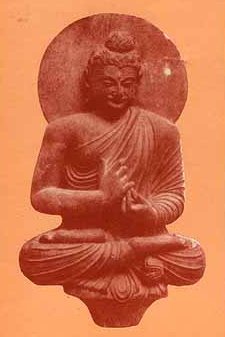Milata, Mīlata, Milāta, Milita: 6 definitions
Introduction:
Milata means something in Hinduism, Sanskrit, Buddhism, Pali, Marathi. If you want to know the exact meaning, history, etymology or English translation of this term then check out the descriptions on this page. Add your comment or reference to a book if you want to contribute to this summary article.
In Hinduism
Kavyashastra (science of poetry)
Source: Shodhganga: The Kavyavilasa of Ciranjiva Bhattacarya (kavyashastra)Mīlata (मीलत) refers to one of the 93 alaṃkāras (“figures of speech”) mentioned by Cirañjīva Bhaṭṭācārya (fl. 17th century) in his Kāvyavilāsa and is listed as one of the 89 arthālaṃkāras (figure of speech determined by the sense, as opposed to sound).—The figure of speech mīlita has been admitted by Ālaṃkārikas like Ruyyaka (A.S. P. 167), Mammaṭa (X/130), Viśvanātha (X/115), Jayadeva (V/33) etc.
Cirañjīva defines mīlita as follows—“mīlitaṃ yadi sādṛśyenā’bhiśrūtaṃ na lakṣyate”. “When due to excessive similarity between two things or attributes one takes a back seat and is not perceived or does not come to our notice, it is the figure mīlita”. This definition of Cirañjīva is very much akin to the definitions propounded by Jayadeva.
Example of the mīlita-alaṃkāra:—
kucayoratigaurarūpayordhanakāśmīrajayorvilepanam |
kurute sma yuvā punaḥpunarna kṛtaṃ kinnu meyati cintayan ||“The young man tries to smear again and again his breasts which are extremely fair complexion with saffron thinking whether it has not been done by me”.
Notes: In this verse on account of the excessive whiteness of breast the saffron is not coming to notice so the young man strives to point the saffron again and again. Here the saffron is not coming to the vision being subdued by the excessive whiteness of breasts. So this is an example of mīlita.

Kavyashastra (काव्यशास्त्र, kāvyaśāstra) refers to the ancient Indian tradition of poetry (kavya). Canonical literature (shastra) of the includes encyclopedic manuals dealing with prosody, rhetoric and various other guidelines serving to teach the poet how to compose literature.
Languages of India and abroad
Pali-English dictionary
Source: BuddhaSasana: Concise Pali-English Dictionarymilāta : (pp. of milāyati) withered, faded, dried up. || milātā (f.) fadedness.
Source: Sutta: The Pali Text Society's Pali-English DictionaryMilāta, (pp. of milāyati) faded, withered, dried up J. I, 479; V, 473; Vism. 254 (°sappa-piṭṭhi, where KhA 49 in same passage reads “milāta-dham(m)ani-piṭṭhi”); DhA. I, 335; IV, 8 (sarīra), 112; SnA 69 (°mālā, in simile); Mhvs 22, 46 (a°); Sdhp. 161. (Page 533)

Pali is the language of the Tipiṭaka, which is the sacred canon of Theravāda Buddhism and contains much of the Buddha’s speech. Closeley related to Sanskrit, both languages are used interchangeably between religions.
Marathi-English dictionary
Source: DDSA: The Molesworth Marathi and English Dictionarymiḷatā (मिळता).—p pr of miḷaṇēṃThat may be procured, obtained, or got.
Source: DDSA: The Aryabhusan school dictionary, Marathi-Englishmiḷatā (मिळता).—pr That may be procured. miḷatēṃ ghēṇēṃ To accommodate oneself with.
Marathi is an Indo-European language having over 70 million native speakers people in (predominantly) Maharashtra India. Marathi, like many other Indo-Aryan languages, evolved from early forms of Prakrit, which itself is a subset of Sanskrit, one of the most ancient languages of the world.
Kannada-English dictionary
Source: Alar: Kannada-English corpusMīlita (ಮೀಲಿತ):—[noun] (rhet.) an implied simile in which the similarity between two objects is only implied.
--- OR ---
Mīḷita (ಮೀಳಿತ):—[noun] = ಮೀಲಿತ [milita].
Kannada is a Dravidian language (as opposed to the Indo-European language family) mainly spoken in the southwestern region of India.
See also (Relevant definitions)
Starts with: Milatajulata, Milatakala, Milatata, Milatau, Milatava.
Ends with: Amilata, Kalamilata, Kalmilata, Milamilata, Pamilata, Samilata, Sammilata.
Full-text (+21): Milita, Milia, Mil, Nimilita, Milana, Sammilita, Milatakala, Militalamkara, Sammilata, Nimilitamukha, Sammilitadruma, Nimilitadrish, Nimilitanakshatra, Amilatata, Akuli, Lobha, Samketamilita, Melia, Milit-kriya, Milatata.
Relevant text
Search found 13 books and stories containing Milata, Mīlata, Milāta, Milita, Miḷatā, Milatā, Mīlita, Mīḷita; (plurals include: Milatas, Mīlatas, Milātas, Militas, Miḷatās, Milatās, Mīlitas, Mīḷitas). You can also click to the full overview containing English textual excerpts. Below are direct links for the most relevant articles:
Sahitya-kaumudi by Baladeva Vidyabhushana (by Gaurapada Dāsa)
Text 10.213 [Mīlita] < [Chapter 10 - Ornaments of Meaning]
Text 10.229 [Sāmānya] < [Chapter 10 - Ornaments of Meaning]
Text 10.214 < [Chapter 10 - Ornaments of Meaning]
The backdrop of the Srikanthacarita and the Mankhakosa (by Dhrubajit Sarma)
Part 5ab - Alaṃkāra (28): Mīlita or lost < [Chapter III - Literary Assessment Of The Śrīkaṇṭhacarita]
Part 1 - Rīti or the style < [Chapter III - Literary Assessment Of The Śrīkaṇṭhacarita]
Brihad Bhagavatamrita (commentary) (by Śrī Śrīmad Bhaktivedānta Nārāyana Gosvāmī Mahārāja)
Verse 1.6.12 < [Chapter 6 - Priyatama (the most beloved devotees)]
Verse 2.3.112 < [Chapter 3 - Bhajana (loving service)]
Garga Samhita (English) (by Danavir Goswami)
Verse 4.11.23 < [Chapter 11 - The Story of the Gopīs that were Residents of...]
Abhinaya-darpana (English) (by Ananda Coomaraswamy)